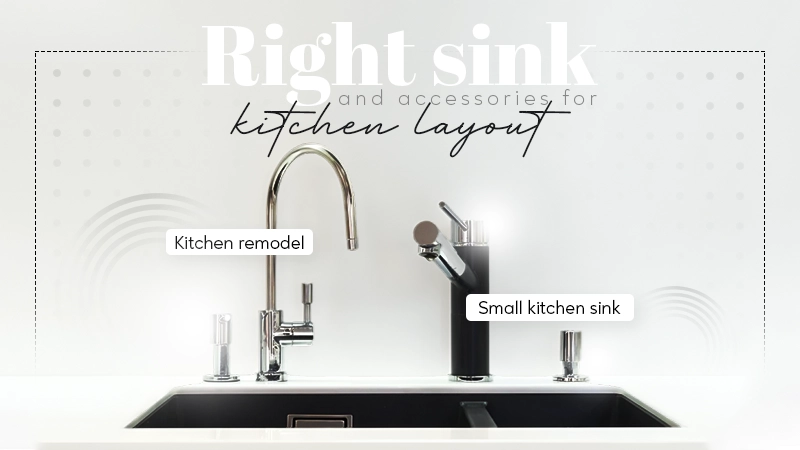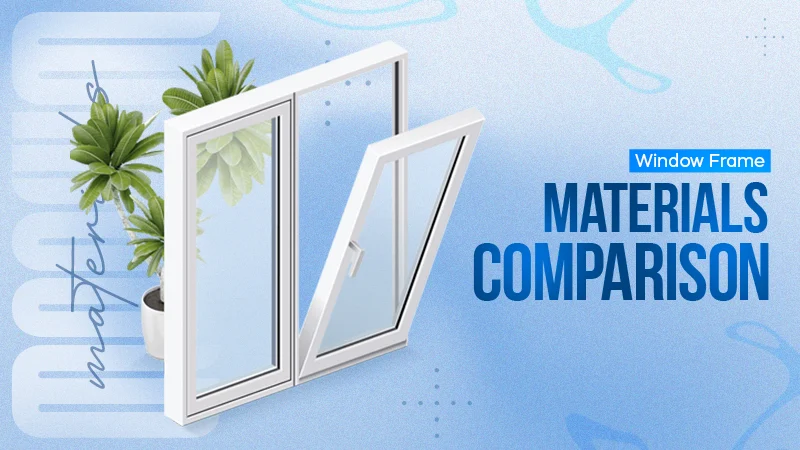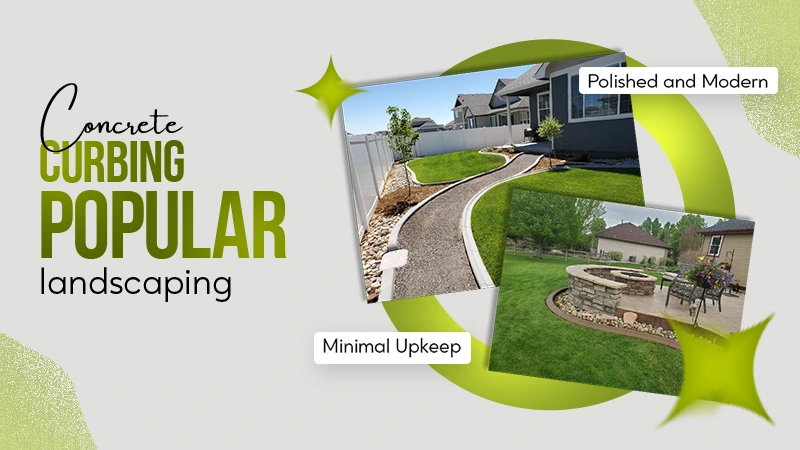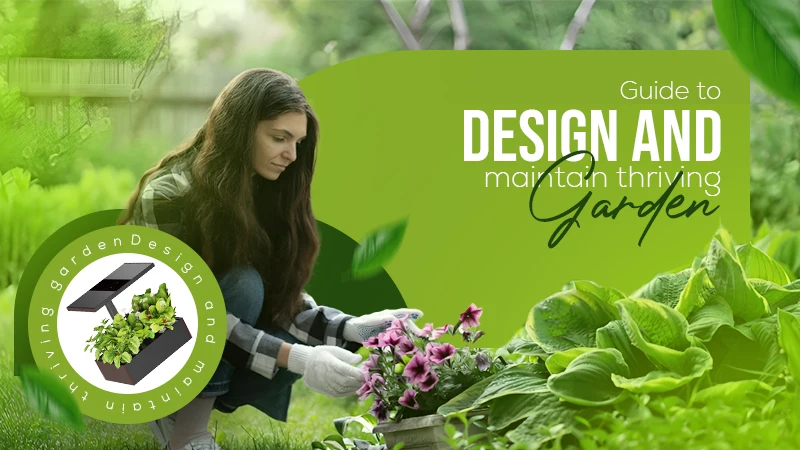“Plants are the silent healers that purify and freshen the air we breathe.”
With air quality significantly declining, indoor plants have become an absolute necessity. Low-light indoor hanging plants are easy to maintain as they demand indirect, bright light and can be sustained even without sunlight.
In today’s article, we bring to you 19 gorgeous low-light hanging plants that will add to the aesthetics of your house.
19 Beautiful Low-Light Hanging Plants to Elevate Your Living Space
Here we have mentioned some of the best low-light hanging plants indoors that you can introduce to your living area, workplace, or study room.
Golden Pothos

Also known as Devil’s Ivy, Golden Pothos is a low-light trailing plant good for air purification. It adds an element of perfection to your home decor with its appealing trail. This plant can survive under complete shade and artificial light, so you don’t have to worry about it when going on a family day out.
- Botanical Name: Epipremnum aureum
- Native to: Southeast Asia
- Light Required: Medium to low light
- Watering Schedule: Water when the top two inches of the soil are dry
- Plant Size: up to 15ft
- Ideal Temperature: 70-90 degrees Fahrenheit
What to Know?
- Native to Southeast Asia.
- Good for people who remain mostly outdoors.
- Do not need much fertilization.
- Apt for houses or flats with low light, and good humidity levels
Major Issues:
- Be aware of pests around this plant. Isolate the plant, if you find any pests around them.
Swiss Cheese Plant

Montesra deliciosa aka Swiss Cheese is a beautiful low light hanging plant with holes in its leaves, giving it a striking appearance. The foliage varies from light green to dark green vibrant hues and with perforated leaves, its vines from the hanging baskets look gracious.
- Botanical Name: Monstera deliciosa
- Native to: Central and South America
- Light Required: Indirect light, partial shade, partial bright
- Watering Schedule: Water when the top one inch of the soil is dry.
- Plant Size: up to 13 ft
- Ideal Temperature: 65-80 degrees Fahrenheit
What to Know?
- Need moist soil, but not soggy
- Combine synthetic and organic fertilizers for soil health and proper plant growth.
- Feed them once a month in summer, and twice a month during winter.
- They are good purifiers, ideal for moist bathrooms.
- This plant needs a moss pole to climb up.
- The holes in heart-shaped leaves increase in size as the plant matures.
- Position them indoors near a window that faces the sun.
Major Issues:
- Leaves turn yellow and need a humid atmosphere.
- Toxic to pets, so position them out of their reach.
Marble Queen Pothos

Epipremnum aureum often referred to as Marble Queen is another mesmerizing low-light hanging plant, which performs exceptionally well in all sorts of lights. It has assorted white and cream hues on its lush green leaves that can get damaged by direct sunlight.
- Botanical Name: Epipremnum aureum ‘Marble Queen’
- Native to: Polynesia and several tropical regions
- Light Required: Medium to low light, avoid direct sunlight
- Watering Schedule: Water every 1–2 weeks, depending on their placement in-house
- Plant Size: up to 15 ft
- Ideal Temperature: 65-85 degrees Fahrenheit
What to Know?
- It needs high-quality, peat-free potting soil.
- These plants cannot tolerate temperatures below 55 degrees Fahrenheit.
- Marble Queen Pothos eradicates the odor and purifies the air.
- Position them near windows for morning and evening sunlight (not direct, though).
Major Issues:
- Their leaves can turn brown or yellow, if not watered appropriately.
- The plant is deadly for cats and dogs.
String of Hearts

String of Hearts scientifically called Caropegia is a whimsical low light trailing plant. The leaves of this tender plant have silver hues in them. Hang it up high as an indoor plant, and you’ll be stunned to see how long it grows.
- Botanical Name: Caropegia
- Native to: Southern Africa (from Zimbabwe) to eastern South Africa
- Light Required: Moderate to bright, indirect light
- Watering Schedule: Water when the top 2-3 inches of the soil is dry.
- Plant Size: up to 10 ft
- Ideal Temperature: 60-80 degrees Fahrenheit
What to Know?
- Feed them with a balanced, water-soluble fertilizer, once a year during their growing season (Spring).
- Position them in a bright, but shaded area to avoid direct sunlight.
- Easy growing indoor plant for west or south-facing windows.
Major Issues:
- Leaves of the plant can curl in case of under-watering, and soggy in case of over-watering.
- Cannot tolerate low humidity.
Satin Pothos

Botanically named Scindapsus pictus, Satin Pothos resembles the touch of a satin fabric. The silver variegation makes the heart-shaped leaf strikingly beautiful. The most promising aspect of this low-light hanging plant is that it grows even under the shade of other trees. It can thrive in shade and does not demand much natural light.
- Botanical Name: Scindapsus pictus
- Native to: Southeast Asia
- Light Required: Keep away from bright light (place it on the east-facing window)
- Watering Schedule: Water in 8 to 9 days
- Plant Size: up to 8 ft
- Ideal Temperature: 65-85 degrees Fahrenheit
What to Know?
- This plant needs a complete water-soluble houseplant fertilizer once a month from spring to fall.
- Makes the home purified, and the air clean and fresh.
- Two inches of soil should be dry between watering sessions.
Major Issues:
- Too high temperatures can turn leaves brown, and too low temperatures can kill the plant.
- Their roots can easily get rotten with over-watering.
Lipstick Plant

Referred to as the Aeschynanthus, the Lipstick plant bears bright red flowers. For flowering, this plant needs bright light. If positioned on a higher shelf or a hanging planter, it is a perfect low-light trailing plant. Adding its charm as an indoor decor plant, the lipstick plant is preferred for its attractive foliage.
- Botanical Name: Aeschynanthus
- Native to: China and Indochina
- Light Required: Bright, indirect light, with partial shade
- Watering Schedule: Water when the top 25% of the soil is dry.
- Plant Size: up to 3 ft
- Ideal Temperature: 65-75 degrees Fahrenheit
What to Know?
- It thrives in high humidity levels. The soil should be moist, but not soggy.
- Position them on a south-facing window, with indirect, yet bright light.
- A houseplant fertilizer is a must every week during summer and spring, and once a month during the fall and winter seasons. Make sure you feed them when the soil is damp.
- Once planted, it is suggested not to fertilize for more than 15 days.
Major Issues:
- Leaves will turn brown below 55 degrees Fahrenheit.
- Excess water can lead to rotten roots.
- Spider mites are the problem pests that affect plant growth if leaves are soggy.
Hoya Tricolor

Biologically recognized as Hoya carnosa Tricolor, this popular houseplant is commonly called the wax flower or Hoya Tricolor. This low-light indoor plant thrives in humidity and is preferred for its lovely waxy sheen. Some leaves have a pinkish hue on them. Both, partial shade, and bright light are required for Hoya Tricolor’s growth.
- Botanical Name: Hoya carnosa Tricolor
- Native to: Australia and Eastern Asia
- Light Required: Bright, but indirect light
- Watering Schedule: Water once in two weeks.
- Plant Size: up to 2-4 ft
- Ideal Temperature: 70-80 degrees Fahrenheit
What to Know?
- This plant needs water-soluble balanced fertilizer once in 15 days in their growing season.
- It is a low-maintenance plant that requires an organic potting mix.
Major Issues:
- Pests caused by over-fertilizing or watering mistakes are a common issue with these plants.
Neon Robusta Arrowhead Plant

Popularly known as Syngonium neon robusta because of its beautiful color, this plant is highly sought after by plant lovers. The pink leaves add volume to the plant’s striking appearance; however, the pinkish hue fades away if the light is not bright. Though Neon Robusta performs well in bright areas, it does not mean direct sunlight is required.
- Botanical Name: Syngonium neon robusta
- Native to: Mexico, Brazil, and Bolivia
- Light Required: Bright, but indirect light
- Watering Schedule: Water when the top two inches of the soil is dry.
- Plant Size: up to 6 ft
- Ideal Temperature: 60-80 degrees Fahrenheit
What to Know?
- Needs liquid fertilizer for quick boost, and granular fertilizer for slow release.
- Require fertilization twice a week, and during winters, the requirement reduces.
- It’s a versatile climber plant, easy to maintain.
Major Issues:
- Keep this plant out of children’s reach, it can be toxic for them.
String of Nickels

Senecio Herreianus, commonly known as String of Nickels, gives an appealing appearance to coins like foliage-pale green, bronze, and silver hues. The best part is that they can thrive under shade, so they do not need much light. Damp bathrooms are the go-to location for this low-light hanging plant. Also, you need to mist its trailing vines at regular intervals.
- Botanical Name: Senecio Herreianus
- Native to: Southeast Asia
- Light Required: Bright, but indirect light
- Watering Schedule: Water when most of the soil is dry.
- Plant Size: up to 10 ft
- Ideal Temperature: 40-80 degrees Fahrenheit
What to Know?
- Change the soil in the spring or summer season every year.
- It requires a well-draining potting mix.
- Ideal for vertical gardens.
- The plant needs moisture, but yes, overwatering is never recommended.
Major Issues:
- String of Nickels is receptive to aphids and mealybugs.
English Ivy

Though an outdoor plant, English Ivy or Hedera helix can grow, and thrive indoors under shade. Due to its poisonous nature, keep it out of pets’ and children’s reach. Place it on a higher shelf, and it can serve as a low light trailing plant. Its beautiful dark green leaves make it a perfect indoor ornamental plant.
- Botanical Name: Hedera helix
- Native to: Europe, Northern Africa, and Western Asia
- Light Required: Medium to bright light
- Watering Schedule: Water in 6-10 days during summers and in 10-14 days in winters.
- Plant Size: up to 9 ft
- Ideal Temperature: 59-100.4 degrees Fahrenheit in summer, 41-50 degrees Fahrenheit in winter
What to Know?
- Needs fertilizer every two to four weeks in the growing seasons of summer and spring.
- Stop fertilization during scorching heat, and major temperature drops during the winters.
- This versatile plant stimulates mucus glands, thereby helping people to improve lung function.
Major Issues:
- Its saplings can irritate the skin.
- The plant might need pruning at regular intervals with clippers.
Boston Fern

Boston Fern, also known as sword fern or Nephrolepis exaltata, prefers the humid environment. Naturally, they can grow anywhere in shady areas, the only prerequisite is proper watering and humid surroundings. These easy-to-grow plants need bright light to flourish, but not direct sunlight.
- Botanical Name: Nephrolepis exaltata
- Native to: West Indies, Florida, Central America, Mexico, South America, Africa, and Polynesia
- Light Required: Bright but indirect sunlight
- Watering Schedule: Water them weekly when the top 2 inches of the soil is dry.
- Plant Size: up to 4 ft
- Ideal Temperature: 60-75 degrees Fahrenheit
What to Know?
- They can also bear lower temperature till 50 degrees Fahrenheit
- Feed them with houseplant fertilizer every month from spring to summer.
- Boston Ferns are pet and children-safe plants.
- These plants are the best air purifiers, helpful to calm dry skin, and irritated throat and nasal issues.
Major Issues:
- Plants might turn brown, and die due to neglect in watering requirements.
Spider Plant

Spider plants aka Chlorophytum comosum love warmth and humid environments, and they make good low-light plants hanging in the backyard shady areas. These plants are alternatively named spider ivy, ribbon plant, and airplane plant. Its long thin, and arched solid green leaves sometimes mixed with white, make it appear strikingly beautiful.
- Botanical Name: Chlorophytum comosum
- Native to: Coastal regions of South Africa
- Light Required: Bright but indirect sunlight
- Watering Schedule: Water once a week.
- Plant Size: up to 50 cm
- Ideal Temperature: 70-90 degrees Fahrenheit
What to Know?
- This plant needs an all-purpose fertilizer once a month during its growing season-spring and summer.
- Completely purifies your indoor environment.
Major Issues:
- Spider Plant attracts pests easily, so be watchful, and take immediate action to get rid of them.
Heartleaf Philodendron

Heartleaf Philodendron, botanically referred to as Philodendron hederaceum are the best low light hanging plants, for beginners, as they need less care. This beautiful plant with dark green heart-shaped leaves needs indirect light and minimum maintenance.
- Botanical Name: Philodendron hederaceum
- Native to: Mexico, Brazil, and West Indies
- Light Required: Low light
- Watering Schedule: Water once in every 1-2 weeks.
- Plant Size: up to 10 ft
- Ideal Temperature: 65-80 degrees Fahrenheit
What to Know?
- Nitrogen fertilizer is apt for this plant if given every three to four months.
- It filters toxic gases from the environment.
- An east, west, or south-facing window is the best spot for its indoor positioning.
Major Issues:
- The plant is toxic for humans and pets; so position them on a higher shelf.
Radiator Plant

The Radiator plants belong to the Peperomia (Peperomia obtusifolia) species, and parent to more than 1500 species. This beautiful low light indoor hanging plant is ideal for new planters. Their leaves can store water, so watering is not a major concern. They are also low-maintenance plants that don’t take up much space.
- Botanical Name: Peperomia obtusifolia
- Native to: Central America, Asia, South America, Africa, and the Caribbean
- Light Required: Indirect, partial light
- Watering Schedule: Water when the top two inches of the soil is dry.
- Plant Size: up to 1 ft
- Ideal Temperature: 65-80 degrees Fahrenheit
What to Know?
- It needs an all-purpose fertilizer, from April to September once a month, to avoid fertilizing during winter.
- The plant is pet-friendly.
Major Issues:
- Overwatering can spoil the plant’s roots and foliage.
Mini Monstera

Mini Monstera, biologically known as Rhaphidophora tetrasperma, grows speedily in partial shade, and indirect light. It has light, bright green leaves, appearing as a little version of the actual Monstera. This plant can be nurtured as a bushy plant with regular trimming, or maintained as a climbing plant.
- Botanical Name: Rhaphidophora tetrasperma
- Native to: Malaysia and Southern Thailand
- Light Required: Indirect light, partial shade
- Watering Schedule: Water when the top few inches of the soil is dry.
- Plant Size: up to 8 ft
- Ideal Temperature: 60-80 degrees Fahrenheit
What to Know?
- A balanced fertilizer is apt for Mini Monstera. Half-diluted consistency of the fertilizer is recommended as the plant grows fast.
Major Issue:
- Keep a check on your fertilization feeds; overdose can burn the leaves.
Neon Pothos

Neon Pothos, also known as Epipremnum aureum ‘Neon’, are the best hanging plants for low light conditions, as they’ll thrive perfectly in fully shaded areas of your home. Its leaves won’t lose their beautiful green pigment even in the shade.
- Botanical Name: Epipremnum aureum ‘Neon’
- Native to: Polynesian Islands, Solomon Islands, and SouthEast Asia
- Light Required: Bright but indirect light
- Watering Schedule: Water when the top two inches of the soil is dry.
- Plant Size: up to 15 ft
- Ideal Temperature: 65-80 degrees Fahrenheit
What to Know?
- Opt for a balanced liquid fertilizer once a month starting from early spring to late summer.
- Well suited for bathrooms and offices.
- They are pet-friendly plants.
Main Issue:
- The Neon Pothos plant is susceptible to fungal growth, rotting roots, and bacterial leaf spots.
Snake Plant

Yellow outlining on vertical green leaves makes the Snake Plant aka Dracaena trifasciata a beautiful low light hanging plant for your home. It can flourish in low light, and exposure to direct sunlight can harm it. Snake plants perform the dual role of maintaining the air quality, and enhancing the home decor.
- Botanical Name: Dracaena trifasciata
- Native to: West and Central Africa
- Light Required: Bright but indirect light (can survive in low light too)
- Watering Schedule: Water when the soil is completely dry.
- Plant Size: up to 3-6 ft
- Ideal Temperature: 60-75 degrees Fahrenheit
What to Know?
- Their fertilization depends on the time of the year. From spring to fall, feed them only once a month. Between late fall to early spring, no fertilization is required.
- If the soil is moist during winter, your snake plant needs water once a month.
- They require less attention, and can easily adjust to new locations or underlying conditions.
Major Issue:
- Snake plants store water in their leaves. Overwatering is a common mistake that can cause root rot.
Cast Iron Plant

Yet another best-hanging plant for low light locations is the Cast Iron Plant or Aspidistra elatior. They will surely stimulate mood as the perfect indoor plant with almond-shaped dark green leaves. The plant has low water needs. All it needs is a shady area of your house to be the best low-light indoor hanging plant.
- Botanical Name: Aspidistra elatior
- Native to: China and Japan
- Light Required: No direct light, place in shade
- Watering Schedule: Water when the soil is dry.
- Plant Size: up to 2-3 ft
- Ideal Temperature: 60-75 degrees Fahrenheit
What to Know?
- Your indoor Cast Iron Plant needs a liquid houseplant fertilizer in the spring and summer seasons.
- They do not need fertilization during the fall and winter seasons.
- It’s a pet-friendly addition to your in-house decor.
Major Issue:
- The most common issue with the Cast Iron Plant is root rot due to over-watering.
ZZ Plant

ZZ Plant, scientifically referred to as Zamioculcas zamiifolia is the ideal low light hanging plant for your office or home decor, adding up as a friendly green member. They are recognized by their dark green leaves and spiral patterns. It is better to position them at a higher place, as they can harm pets and children.
- Botanical Name: Zamioculcas zamiifolia
- Native to: Eastern Africa
- Light Required: Indirect light, partial shade, partial bright
- Watering Schedule: Water once in 2-3 weeks.
- Plant Size: up to 2-3 ft
- Ideal Temperature: 60-75 degrees Fahrenheit
What to Know?
- Being a low-maintenance houseplant, your ZZ Plant needs fertilization monthly in the growing season.
Major Issues:
- The ZZ Plant is not pet and children-friendly.
- Its glossy leaves need to be wiped with a damp cloth. Adding sprays can clog their pores.
Taking Care of Low Light Hanging Plants
Nevertheless, these low-light indoor hanging plants do not require sunlight. They can easily thrive in shady areas with minimal care. Here are the main points that one should consider as a first-time indoor plant owner.
- The photosynthesis process is a mandate for every plant. So, the indoor plants need artificial lighting or indirect sunlight, as they are not zero-light plants.
- Do not expose them to direct sunlight, as it can burn and severely dehydrate their leaves.
- Use fluorescent or special LED lights for indoor green plants. Remember to show them some indirect sunlight for a couple of hours in a day.
- Place your low light trailing plants near the windows, or let them mingle with their other green friends receiving natural light.
- Work on the height of your hanging indoor plants because too much heat radiated from indoor light can damage the leaves, and complete darkness can hinder their growth.
- Low light trailing plants have a slow photosynthesis process; so, they do not require much watering. Water them once a week only, as too much water can lead to rotten roots.
- Be wary of the pests that can damage them. Get rid of gnats in plants as soon as possible.
- Choose the right substrate for your indoor plants. Their growth depends on this porous substrate that allows proper water drainage.
Signs and Symptoms Your Plant is Not Healthy
To care for your plants the right way, you must understand them. Similar to all other living beings, plants can get unhealthy too. Here are a few starting signals of your plant’s sufferings:
- Spindly or Lanky Growth:- If the growth of a particular plant seems to lack as compared to its partners, then it might be unhealthy. Provide the plant with extra care and nutrients.
- Scorched Leaves:- This happens when part of the leaves, tips or middle, appear brown as if they were burned. This can happen if they’re receiving more light than necessary.
- Wilting Stems:- If the stems and leaves of your plant seem to wilt down and appear unalive, they may not be getting enough water. Lack of nutrients can also be the reason for a sagging plant.
- Fading Foliage Color:- The color of your plants’ foliage gives a glimpse at their health status. If the color seems to be fading from its original shade, then the plant is not getting enough sunlight to produce chlorophyll.
- Salt Formation on the Soil:- You may notice a white powder building up in the top layer of the soil. This indicates that the watering schedule needs to be re-adjusted. Scrap off the salt layer before watering.
- Troubled roots:- Sometimes the above signals can also be warnings for a deeper problem, in the roots. If your plant is wilting or fading, remove the pot and look out for root rot.
- Stretching stems:- If you find your plant growing but tilting to a particular side, especially towards a light source, then they’re reaching out for more light. Change their position to a place that receives more sunlight.
Keeping your eyes out for the above concerns can help you take actions before it’s too late.
Mistakes to Avoid with Your Low Light Hanging Plants
Indoor plants are a good idea to keep your surroundings pure and clean, provided you give them your love and care. However, there are a few mistakes to avoid once you purchase a couple of the best hanging indoor plants.
- Lighting Mistakes: The most typical mistake people make with low-light hanging plants is keeping these beautiful plants in total darkness. If you also confuse low lighting with no lighting, stop now! Do not keep them in the dark rooms of your house. Look for rooms with windows.
- Repotting Mistakes: You need to be cautious while repotting indoor plants. Consider the correct soil and pot size for your indoor hanging plants.
- Choosing the Wrong Soil Mix: There are special houseplant potting mixes. ZZ plants would have a different potting mix as compared to a Golden Pothos plant, so consider their nutritional requirements while fertilizing them.
- Choosing the Wrong Indoor Plant: While deciding upon a low-light indoor plant, just don’t go for fancy plants; you need to match the requirements of the plant, and the spacing in which they will be positioned in your house.
- Over-watering Mistakes: If you find your plants starting to wilt or turn yellow, chances are you have over-watered them. While watering, make sure the soil is moist, not soggy.
- Underwatering Mistakes: Underwatering low-light trailing plants can hamper their growth considerably. Indoor plants also require water but in a certain amount. It does not mean they don’t require water at all.
- Fertilization Mistakes: Overfeeding your plants with fertilizers or using the wrong fertilizers can cause more damage than good.
- Humid Environment: Most indoor plants need the proper humid environment for optimal growth. Areas like kitchens and bathrooms are the perfect places for low-light hanging plants.
So, avoid these common mistakes, love your plants, and watch them thrive!
Wrapping Up
Purchasing and nurturing indoor plants has become prevalent nowadays. Not only are they natural air purifiers, but they are our best indoor green companions. Low light hanging plants like the Satin Pothos are the best option for beginners. It has a satin-like look, making it an appealing indoor green pal. Also, this plant can flourish under the shade of other trees. It’s a low-maintenance plant, perfect to make your atmosphere clean and green.
Why do we need low light hanging plants?
Low light hanging plants do not need a vast garden area. They can also thrive indoors, save space, and clean the surrounding air.
What is the meaning of low light for plants?
Different plants have different lighting requirements. Lighting is essential for the photosynthesis process, which is mandatory for your plant’s growth. So, low light means artificial light or less light, but not direct sunlight.
What are the lighting requirements of low-light plants?
Low light plants need moderate and indirect light. Their leaves can wilt, or burn in bright and direct sunlight. Ideally, north and east-facing windows are apt for indoor, low light plants.






